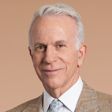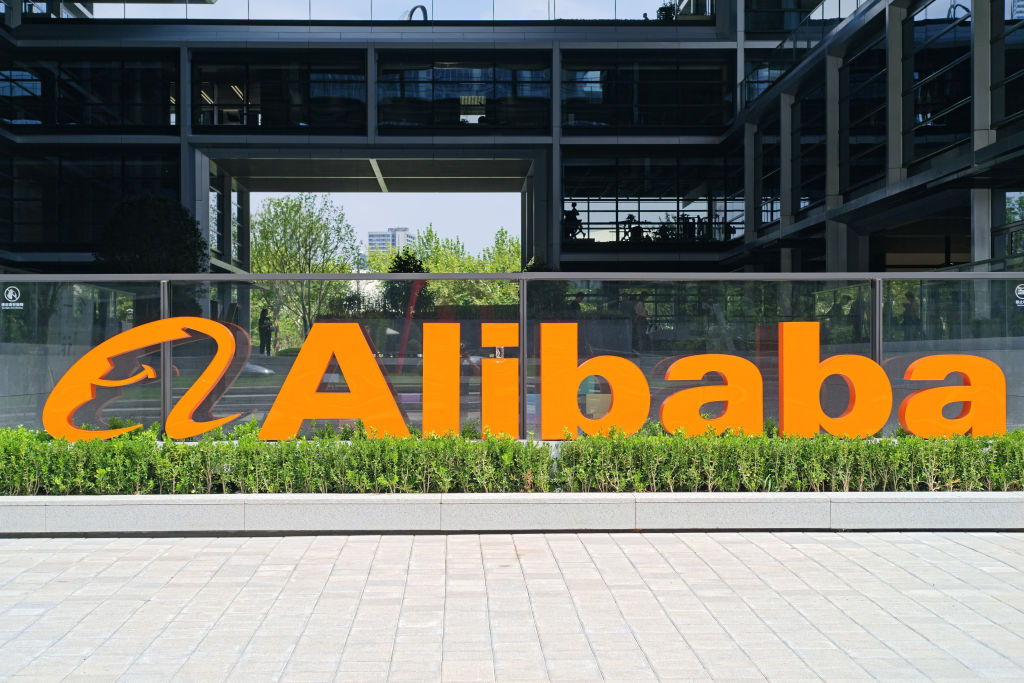Are There Opportunities to Invest in China?
Opportunities to invest in China are plentiful and, arguably, shouldn't be ignored in the U.S. Here's where to look.


When I last wrote about China — five years ago, in the midst of COVID — some readers were critical. Why encourage us to invest in an adversary? China has certainly been a bad actor, threatening Taiwan, supporting the Russian invasion of Ukraine, suppressing dissent, oppressing ethnic and religious groups. But the U.S. is not at war with China; we allow Chinese firms to list on our exchanges, and we encourage Chinese investors to buy U.S. Treasuries (current holdings: $757 billion).
The Trump administration’s official position on China, according to the State Department’s website, seems reasonable: “The United States seeks a constructive, results-oriented relationship with China…. The United States uses a range of exchanges, dialogues, and people-to-people ties to pursue its goals.” I would argue that one of those exchanges involves stocks. But if you feel strongly about not investing in Chinese companies, then don’t. As Warren Buffett says, you don’t have to swing at every pitch.
Still, I find it hard to ignore China. It is the world’s second-largest economy in nominal terms (gross domestic product not adjusted for inflation) and first in purchasing-power parity (that is, based on what people in different countries can actually buy) — $10 trillion ahead of the U.S., according to the International Monetary Fund. The Economist projects 4.4% GDP growth this year, compared with less than 1% each for the U.S., Europe and Japan. Also, China has become not just an imitator but an unquestionable innovator.
From just $107.88 $24.99 for Kiplinger Personal Finance
Become a smarter, better informed investor. Subscribe from just $107.88 $24.99, plus get up to 4 Special Issues

Sign up for Kiplinger’s Free Newsletters
Profit and prosper with the best of expert advice on investing, taxes, retirement, personal finance and more - straight to your e-mail.
Profit and prosper with the best of expert advice - straight to your e-mail.
China now accounts for 29% of the world’s manufacturing output, up from just 9% in 2004 and greater than the next four countries (U.S., Japan, Germany, and India) combined.
According to the World Economic Forum, China’s “culture of techno-optimism, coordinated institutions and economic readiness has allowed artificial intelligence to scale with unprecedented speed.” Cutting its coal dependency by one-fourth and boosting renewables, China increased its electricity-generating capacity — essential for AI and advanced manufacturing — two and a half times from 2010 to 2024, while the U.S. and the EU practically stood still.
China is jumping hurdles
China has problems, among them a glut of unsold real estate and the enmity of the U.S. Both Donald Trump and Joe Biden have hit China with big tariffs and export controls on technology.
So far, China has proved resilient, in part because U.S. industry needs China’s rare earths and more-prosaic components for manufacturing and because consumers demand low-cost Chinese goods. In May, because of tariffs, Chinese exports to the U.S. fell 35% but still rose globally by 5%.
Markets are impressed. After three years of double-digit losses, Chinese stocks recovered in 2024 and are far outstripping U.S. shares in 2025. (Stocks mentioned here trade as American depositary receipts. Prices and returns in this column are as of June 30; securities I like are in bold.)
China’s government is encouraging new industries, and it leads the world in industrial robotics and electric vehicle production. Though effectively banned from the U.S. because of 100% tariffs, Chinese EV maker BYD (BYDDY, $94) is number one in the world, eclipsing Tesla (which was allowed to sell 637,000 EVs in China last year).
BYD is also the world’s largest producer of rechargeable batteries. Its new technology adds 250 miles of range in five minutes; no competitor comes close. BYD benefits from government subsidies, but it has also figured out how to produce EVs cheaply. It sells a model in China for $8,000, in the U.K. for $26,000 and in Mexico for $21,000. The cheapest Tesla in the U.S. is $42,000.
Buffett’s Berkshire Hathaway invested in BYD stock in 2008, and since then, according to Morningstar, the original stake has increased in value by at least 25 times. Shares are pricey, but the business has more than tripled its revenues in three years.
Another Chinese company, Xiaomi (XIACY, $39), created a sensation in June with an electric SUV that drew 289,000 orders in the first hour. Xiaomi is also the world’s third-largest smartphone maker, after Samsung and Apple, and makes home appliances and TVs. Shares have more than tripled in 12 months, partly because of threats that tariffs will drive the iPhone’s price higher.
A smaller, premium EV company, XPeng (XPEV, $18), has 4,000 orders for a flying car — combining a ground vehicle with an aircraft module — which will enter production next year. The stock has more than doubled in the past year, but it remains far below its late-2020 high.
Food-service company Meituan (MPNGY, $32) has interests in health care and travel as well. It is using low-altitude drones to deliver meals in Beijing, Hong Kong, Dubai and dozens of other cities. In the most recent quarter, revenues rose 18% from the same quarter a year ago. Its business is mostly domestic, insulating Meituan from trade wars.
NetEase (NTES, $135) is one of the world’s largest providers of video games. After being flat since COVID, shares took off this year, returning 53.0%. But like many Chinese stocks, NetEase, with a market capitalization (shares outstanding times price) of $85 billion, is moderately priced.
China’s Amazon.com

Shares in Alibaba (BABA, $113) offer more opportunity — and more risk. When the e-commerce and cloud-computing giant, akin to Amazon, went public on the New York Stock Exchange in 2014, it was valued at more than $200 billion, a record. But in the three years after the Chinese government’s 2021 crackdown on high-flying tech firms, and with questions swirling about Alibaba’s finances, the stock lost three-fourths of its market cap. Shares have made a comeback over the past 12 months, and my guess is that Alibaba will live up to its original promise. The price-earnings ratio is only 12.
Such low valuations are a big part of China’s appeal to investors right now. MSCI, the index provider, reports that the forward P/E of its China index, which captures 85% of the country’s stock universe, is just 11.
China ETFs
The best way to own China is through diversified exchange-traded funds such as iShares China Large-Cap (FXI, $37), which returned 29.0% in 2024 and is up 21.7% so far this year. Another good choice, SPDR S&P China (GXC, $88), has returned 31.3% over the past 12 months — more than twice as much as the S&P 500.
Also attractive is Franklin FTSE China (FLCH, $22), which has been an excellent performer and has a lower expense ratio (0.19%) than its competitors. The fund’s top asset is Tencent Holdings (TCEHY, $65), the gaming and social media company that, like Alibaba, took a dive during the government’s big-tech crackdown but has been rising briskly over the past year. In the most recent quarter, Tencent’s revenues rose 13% and profits went up 14%. Tencent is also making a big bet on AI.
China is hoping to capitalize on the chaos the U.S. has unleashed on global markets. But the nation still lacks a robust domestic consumer market, a reputation for rule of law and a group of trillion-dollar Silicon Valley–style tech companies whose cutthroat competition generates mutual benefits. In short, these are still early days for the Chinese economy — a condition that holds both danger and opportunity for investors.
James K. Glassman chairs Glassman Advisory, a public-affairs consulting firm. He does not write about his clients. He owns none of the securities mentioned here. You can reach him at JKGlassman@gmail.com.
Note: This item first appeared in Kiplinger Personal Finance Magazine, a monthly, trustworthy source of advice and guidance. Subscribe to help you make more money and keep more of the money you make here.
Related content
Profit and prosper with the best of Kiplinger's advice on investing, taxes, retirement, personal finance and much more. Delivered daily. Enter your email in the box and click Sign Me Up.

-
 What to Do If You Plan to Make Catch-Up Contributions in 2026
What to Do If You Plan to Make Catch-Up Contributions in 2026Under new rules, you may lose an up-front deduction but gain tax-free income once you retire.
-
 If You'd Put $1,000 Into Lowe's Stock 20 Years Ago, Here's What You'd Have Today
If You'd Put $1,000 Into Lowe's Stock 20 Years Ago, Here's What You'd Have TodayLowe's stock has delivered disappointing returns recently, but it's been a great holding for truly patient investors.
-
 How to Max Out Your 401(k) in 2026 (New Limits are Higher)
How to Max Out Your 401(k) in 2026 (New Limits are Higher)In 2026, the maximum contribution limits for 401(k) plans have increased, giving you an excellent shot at maximizing your retirement savings.
-
 If You'd Put $1,000 Into Lowe's Stock 20 Years Ago, Here's What You'd Have Today
If You'd Put $1,000 Into Lowe's Stock 20 Years Ago, Here's What You'd Have TodayLowe's stock has delivered disappointing returns recently, but it's been a great holding for truly patient investors.
-
 Don't Trade After-Hours Without Reading This
Don't Trade After-Hours Without Reading ThisAre you a night owl or an early bird with a yen for active trading? Before you transact after-hours, consider these tips and potential traps.
-
 8 Practical Ways to Declutter Your Life in 2026: A Retirement 'Non-Resolution' Checklist
8 Practical Ways to Declutter Your Life in 2026: A Retirement 'Non-Resolution' ChecklistHere's how to stop wasting your energy on things that don't enhance your new chapter and focus on the things that do.
-
 To Retire Rich, Stop Chasing Huge Returns and Do This Instead, Courtesy of a Financial Planner
To Retire Rich, Stop Chasing Huge Returns and Do This Instead, Courtesy of a Financial PlannerSaving a large percentage of your income, minimizing taxes and keeping spending in check can offer a more realistic path to retiring rich.
-
 New Year, New Retirement Rules: Here's How You Can Keep Up as the Landscape Changes
New Year, New Retirement Rules: Here's How You Can Keep Up as the Landscape ChangesFor a successful modern retirement, prepare for a longer life, manage high health care costs and prioritize your social life and purpose.
-
 Stocks End Volatile Year on a Down Note: Stock Market Today
Stocks End Volatile Year on a Down Note: Stock Market TodayAfter nearing bear-market territory in the spring, the main market indexes closed out the year with impressive gains.
-
 I’m 45 and I’ve Barely Invested in the Stock Market. I Recently Inherited $50,000. What Should I Do?
I’m 45 and I’ve Barely Invested in the Stock Market. I Recently Inherited $50,000. What Should I Do?What should you do with a big inheritance? We asked a financial expert for advice.
-
 A Contrarian Approach Pays Off for This Bond Fund
A Contrarian Approach Pays Off for This Bond FundThe Dodge & Cox Income Fund has outperformed in 2025 thanks to its managers' fearless approach.